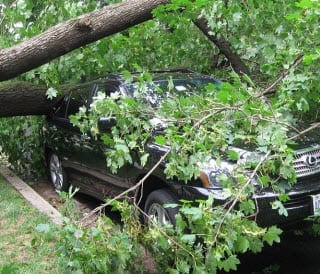Hurricane Isaac Damage Report:
Catastrophe modeling firm AIR Worldwide estimates that insured losses from Hurricane Isaac to onshore properties in the U.S. will be between USD 700 million and USD 2 billion. AIR estimates include wind and storm surge damage to onshore residential, commercial and industrial properties and their contents, automobiles, and time element coverage (additional living expenses for residential properties and business interruption for commercial properties).
“Isaac made two separate landfalls, both as a Category 1 hurricane,” said Dr. Tim Doggett, principal scientist at AIR Worldwide. “The first occurred on August 28 at low-lying Plaquemines Parish, Louisiana, at around 7:45 PM CDT. Instead of continuing inland as expected, the storm veered sharply to the southwest and re-emerged over the water, which allowed it to maintain its strength. It then made a sec ond landfall on the morning of August 29 just west of Port Fourchon, Louisiana, at around 2:15 AM CDT.”
ond landfall on the morning of August 29 just west of Port Fourchon, Louisiana, at around 2:15 AM CDT.”
As of the 4:00 p.m. CDT, August 30, Advisory from the National Hurricane Center, Isaac has at last been downgraded to a tropical depression with maximum sustained winds of 35 mph.
“Inland flooding from continuing precipitation remains a risk and isolated tornadoes may still be spawned by the storm,” continued Dr. Doggett. “Total rainfall accumulations of 7 to 14 inches are expected, with isolated amounts up to 25 inches.”
Damage reports have mostly been focused on the flooding caused by Isaac’s precipitation shield and slow movement. Nearly eight inches of rain were reported at the New Orleans International Airport yesterday. Much of the worst flooding occurred in Plaquemines Parish, Louisiana, where a combination of storm surge and rainfall caused water to top the earthen levees.
Wind damage has been less extensively reported. “However, Isaac’s slow forward speed and refusal to dissipate will exacerbate wind damage,” commented Dr. Doggett. “As the winds persist, roof fasteners and connections can become fatigued and overloaded causing additional damage, and the possibility of damage from flying building debris persists. It should also be noted that with soils heavily saturated by rain, trees can be downed by much lower wind speeds than would otherwise be necessary.”
Downed power lines, trees and other infrastructure are being reported over much of southern Louisiana and Mississippi. Some structural damage is being reported in New Orleans and the surrounding area, mostly limited to roof damage and to non-structural elements such as awnings, signage, and trailers.
AIR does not expect significant physical damage to offshore oil rigs and gas platforms either from wind or waves. Furthermore, as a result of the Gulf hurricanes of 2005 (Katrina, Rita and Wilma), Hurricane Gustav in 2008, and the Deepwater Horizon disaster of 2010, business interruption is a much rarer coverage than in years past. Therefore, AIR does not expect significant insured losses to offshore assets in the Gulf of Mexico as a result of Isaac.
AIR’s loss estimates reflect:
* Insured physical damage to property (residential, commercial, industrial, auto), both structures and their contents; * Additional living expenses (ALE) for residential claims; * For residential lines, estimates reflect AIR’s view that insurers will ultimately pay 10% of modeled storm surge damage as wind losses; * For commercial lines, insured physical damage to structures and contents, and business interruption directly caused by storm surge, assuming a 10% take-up rate for commercial flood policies (Note: Other flood losses are not modeled or reflected in estimates); business interruption losses include direct and indirect losses for insured risks that experience physical loss; * For the automobile line, estimates reflect AIR’s view that insurers will pay 100% of storm surge damage; * Demand surge.
Loss estimates do not reflect:
* Losses resulting from the compromise of existing defenses (e.g., levees); * Losses to uninsured properties; * Losses to infrastructure; * Losses from extra-contractual obligations; * Losses from hazardous waste cleanup, vandalism or civil commotion whether directly or indirectly caused by the event; * Other non-modeled losses; * Losses for U.S. offshore assets and non-U.S. property (AIR estimates these losses separately).

